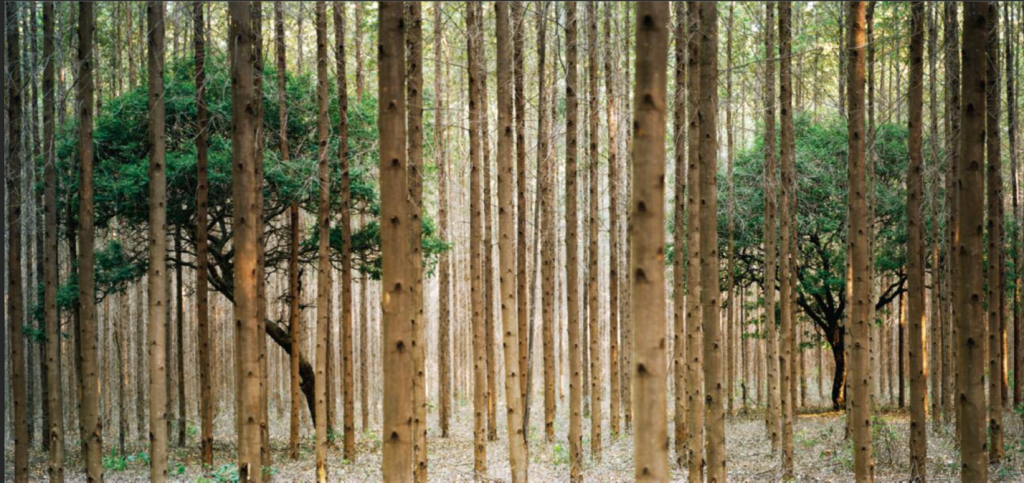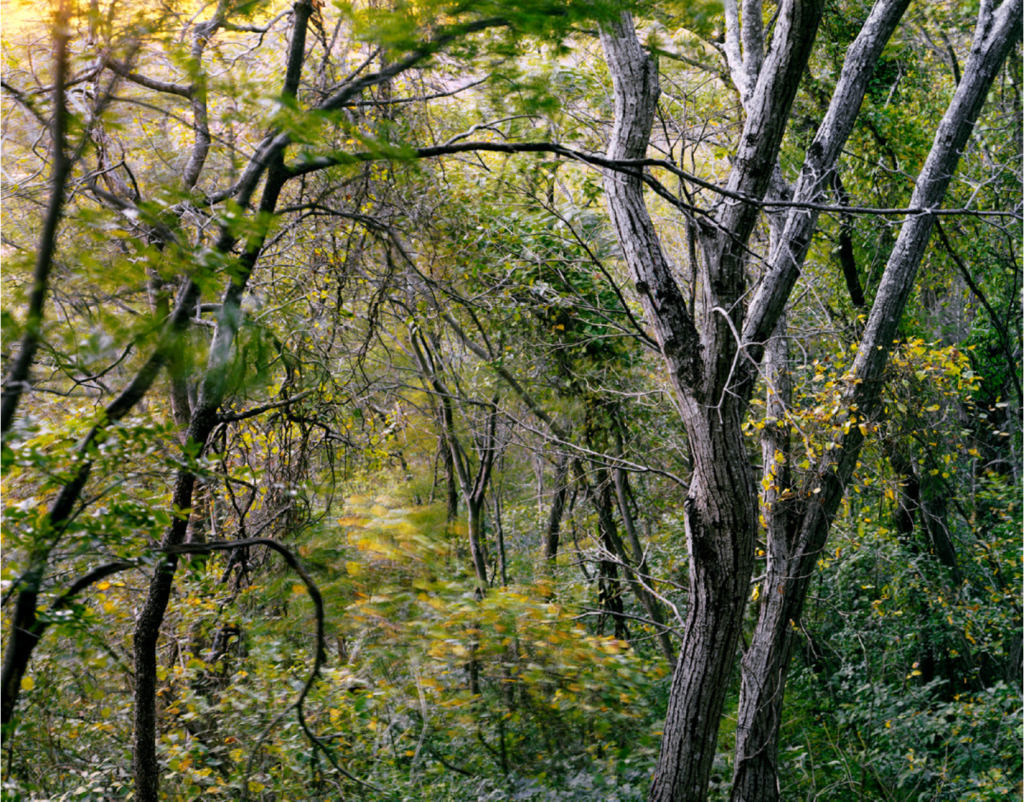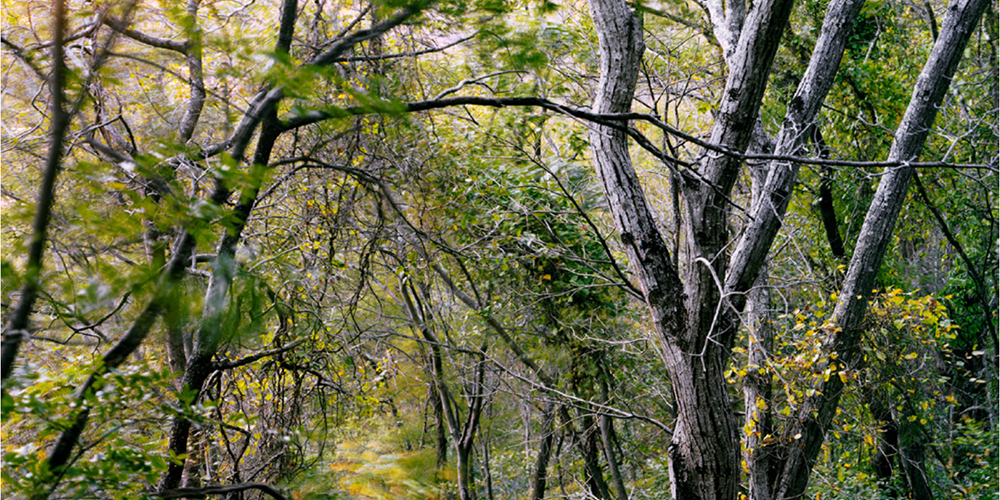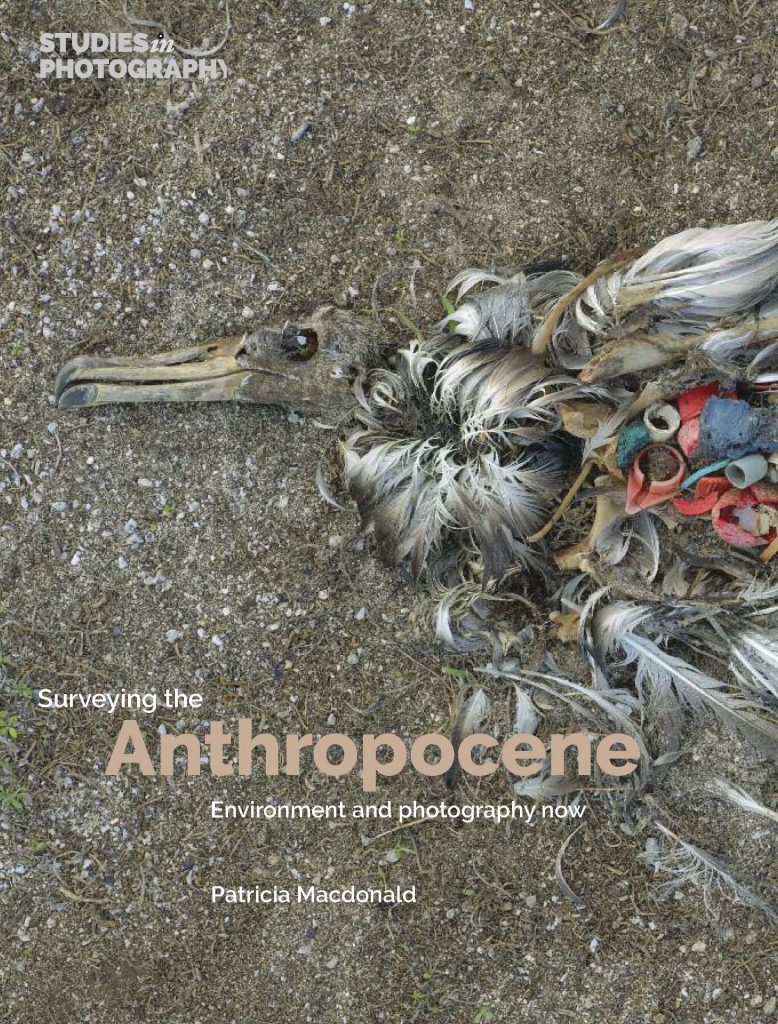
by Patricia Macdonald
This is the first of a series of blogs featuring themes and participants from the book Surveying the Anthropocene: Environment and photography now, edited by Patricia Macdonald (for an introduction to the book, see Q & A blog with the editor). It is a 3-way conversation between environmental artist-photographer Pedro David, eminent botanist Stephen Blackmore, and the book’s editor, Patricia Macdonald.

PM: The rainforest of the Brazilian Amazon tends to be the principal focus – for good reason – of concern relating to global forest ‘loss’ (i.e. destruction) but many other, less well-known areas of native forest worldwide are also being felled or underplanted with commercial tree species, with multiple serious consequences: for their ecology, the many species they support, the water and nutrient status of their soils, and their contribution to carbon capture, which slows down global heating.
One example of such a place is the important and highly biodiverse forest of the Cerrado, in north-east Brazil – a landscape that is being transformed into extensive cattle pasture and monocultures of soy and eucalyptus clones – which is the focus of the ‘Hardwood’ project by artist-photographer Pedro David.
Pedro, could you précis how this project began, how you view its significance, and how your current work on the undamaged Cerrado has been developing?

PD: It’s difficult to précis this project. During many trips around Minas Gerais state in north-east Brazil, the replacement of the natural Cerrado forest by uniform plantations of eucalyptus made a strong impression on me. I repeatedly tried to make meaningful photographs of this process, but the landscape of those plantations is so boring, that I was unsatisfied by the results. But on a return trip to the area in 2012, I passed by a road inside one of those plantations and saw before me the opportunity to encapsulate – in one single image – the angst I felt entering that kind of place. For the first time I saw past and future standing together in the present: a native tree, struggling to survive within an artificial and harmful plantation of industrial clones. The images entitled Suffocation were the result [see first image]. I have found that many viewers respond to these as I did to this sight, even experiencing further, metaphorical, feelings of being suffocated in other contexts.
The new work, from the project ‘Campo Cerrado’ [see second image], may appear more distinct from the Suffocation images from the ‘Hardwood’ series than it really is. Here, in another area of Cerrado woodland, I filled entire fields of view with images of normal, healthy Cerrado forest. But if I were to expand the field of view wider, these images would then show the edges of that natural woodland. So what you see here is an image of a fragment of woodland, surrounded by deforestation, construction, and roads roaring through the extended field of view.
PM: Your images of the underplanted woods are very moving and disturbing. But It is good to hear that a proportion of this important forest is being retained, albeit confined to fragmentary remnants.
Steve, could you give some idea of the biological richness of this environment, and why it is so important to protect it, and other places like it worldwide?
SB: Botanically, the Cerrado is exceptionally diverse with around 10,000 plant species including 8,000 trees, many more than the 200 mammal species it is also home to. It is an ancient mosaic of habitats, characterised by extremely low soil fertility and limited water, especially during the distinct dry season when fires are frequent. Only specialised plants can survive such conditions, including many species of legumes, which are capable of harnessing nitrogen from the atmosphere. The poor soils protected the Cerrado from agricultural development until, unfortunately for biodiversity, massive additions of lime and phosphorus enabled crops to be grown there. The Cerrado is unique, with high levels of endemic species; no other savanna ecosystem quite compares.
PM: That’s fascinating, and clearly the Cerrado forest is the tip of a biodiversity iceberg. Could you expand upon the importance for the world of such biodiverse environments, how the threats they face may be minimised, and how existing damage can sometimes be repaired by what you have referred to as ‘gardening the world’? Could these techniques be of use in the Cerrado?
SB: Restoring diverse forests like the Cerrado requires seeds and saplings from as many of the original, native species as possible and these are not likely to be available commercially. So, targeted seed collection and specialist nurseries for young plants are essential. Botanic gardens can help because they have horticultural expertise in germinating, growing and establishing species never previously cultivated. But planting trees is just the beginning, long-term care is needed and, for a biodiverse forest, epiphytes and understorey species must also be replaced. It’s difficult and expensive – protecting forests in the first place is a much cheaper option.
PM: Pedro, do you think this kind of remedial intervention could be successful in the Cerrado? If so, how might this be brought about there, and how might your work be involved in this? What forces might prevent this happening? Would international support be useful in this regard?
PD: As Steve has said, they know how to do it. But our problem is not about technology; it is about politics and, of course, about money. The Cerrado is being obliterated so as to make way for commodities: meat, corn, soy, iron. In the current agricultural culture, the Cerrado is known as the ‘land of nothing’. It is being destroyed for industrial reasons. To prevent this, the country should cease to be the main source of all these commodities for powerful, foreign imperial interests. But those interests want the supplies to continue. And they don’t want to destroy their own lands to obtain them.
I try to make aesthetically intriguing images that engage deeply with viewers, and evoke powerful feelings and thought processes. I know it’s utopian, but if I can plant a few seeds in some receptive minds, it makes the work worthwhile.
PM: Many thanks to you both. Your comments say it all. In the Anthropocene, we humans are destroying the remaining semi-natural environments – and the ecosystem services without which we are unlikely to survive – due to inequitable transnational overconsumption of commodities, pollution, and the false labelling of Nature as valueless, or ‘free’ to be pillaged.
About the Book
A thought-provoking combination of visually powerful imagery and comment
Surveying the Anthropocene presents a range of approaches to image-making concerning the environment by some of the best artist-photographers working worldwide, alongside texts by some of the most illuminating writers on environmental questions, at a pivotal moment in the human relationship with the planet.
About the Author
Patricia Macdonald BSc PhD FRSE FSA(Scot) FRSA HonFRSGS HonFICS is an environmental / cultural-landscape researcher, writer and academic (since 2004 Honorary Fellow, University of Edinburgh & Edinburgh College of Art) and an award-winning artist-photographer whose powerful, boundary-crossing environmental aerial imagery – made in collaboration with her partner Professor Angus Macdonald of the University of Edinburgh – is commissioned, exhibited, collected and published internationally, spanning fine-art and editorial contexts. She is the author/co-author of ten books/catalogues and numerous articles.
Sign up for our mailing list!
Interested in learning more about Surveying the Anthropocene and other titles from Edinburgh University Press? You can sign up for our mailing list here!






